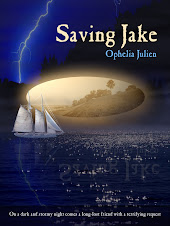Sometimes when I
would try to write a new story, I'd come to the conclusion that there was
something wrong with me, or that something had gone haywire with my skillset. I
would have this great idea for a book, sit down to work on it, and hit a dead
end. And I mean DEAD end.
Then I went and heard
David Morrell speak and he talked about the concept of practicing writers being
able to distinguish between what was an idea and what was an actual story. And
the lightbulb went on. Mr. Morrell explained that not every idea, no matter how
wonderful, shiny, or enticing it may seem, is meant to be expanded into an
actual book.
That helped me a
great deal. Like most writers, I have a manuscript or two lying around that
will probably never see the light of day. We work on things and love them
through to completion and then realize, well, this one probably isn’t going
anywhere for any number of reasons. But I also have several unfinished
manuscripts and stories lying around that started off explosively and then
fizzled out and died. And those are the ones, as I look at them with a
different eye, that were always just ideas. Brilliant maybe. Even dazzling. But
not full-blown premises that could support a full story.
I guess there are
probably writers out there that will disagree with this, and they may be right.
Maybe it is possible to take every single idea that pops into a writing mind
and turn it into a workable story. Two things occur to me, though: if the idea
doesn’t want to get dressed-up in novel-length regalia, why fight it? Also,
just because I can, doesn’t mean I should. Have you ever read a book and
thought, why did the writer write this in the first place? I have wrestled
through my share of somewhat dubious reads and when I finish the last page and
think that question, I always conclude that the book was based on an idea that
wasn’t really meant to be a story. The writer was skillful, persistent, or
maybe just plain stubborn enough to force the issue, and there you have it. A
book that is complete but also begs the question, “Why?”
The good news for me
(and other writers like me), though, is that writers are the ultimate
recyclers. Someone said or wrote that once, and I’m stealing the phrase. How
many of us have pages and pages of scenes, dialogues, notes, and character development
sketches that have never been used? And how many of us are saving them because
we know that sooner or later, we will have need of just that very passage? We’re
very much like quilters who hang onto those colorful pieces of fabric because
sooner or later they will fit into a bigger, gloriously vibrant project. At
this point, I can either have a garage sale of ideas and story snippets, or I
can continue to hoard until I find a proper place for each one of them. Trust
me, I’m a hoarder when it comes to this. After all, part of the trick of
writing a novel is recognizing those parts that don’t actually belong to the
work in progress; they belong to a future work in progress. So I save them,
believing that sooner or later, each and every one of them will see the light
of day.
Writing novels is a
weird enterprise. We dream up entire worlds and invite others into our ethereal
structures, convincing all those who enter and stay with us that they are in a
real place, sharing the adventures of very real people, and joining in the
action every step of the way. But a novel, one that can swallow a reader whole,
is based on an idea that was strong enough and versatile enough to don the garb
of a full-fledged story that can take readers by the hand and show them an
entirely new landscape.
Writers dream dreams
and build worlds for others to enjoy.
And if I think about
writing this way for too long, I’ll freak myself out and probably never touch the
keyboard again. A writer may work that kind of magic, but this writer thinks of herself as someone who, well, just likes to
play with words and ideas, to make up a story. Or to hoard.







